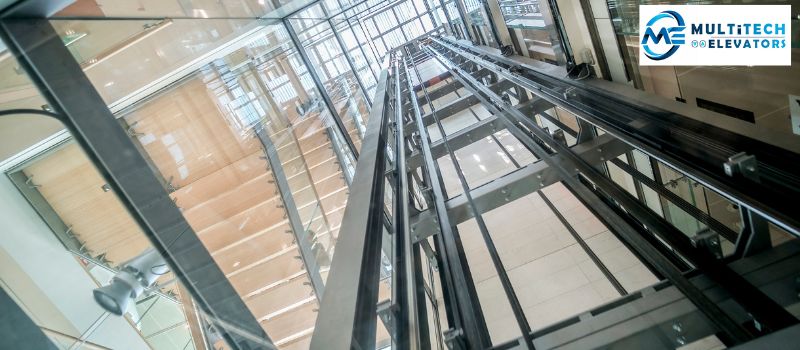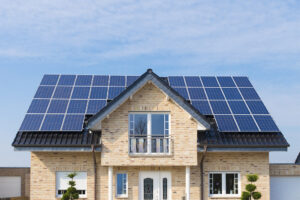REASONS TO MODERNIZE AN ELEVATOR

Modernizing an elevator is an important consideration for building owners and managers, driven by a combination of technological advancements, safety improvements, and the desire to enhance the overall user experience. As buildings age, their elevator systems, often one of the most heavily used and essential components, may become outdated or inefficient. Here are several compelling reasons to modernize an elevator:
1. Improved Safety and Compliance
Safety is the foremost reason to modernize an elevator. Older elevators may not meet current safety standards and regulations. Modernization can bring an elevator up to code, addressing critical safety issues such as:
- Fire Safety: Upgrading to fire-resistant materials and adding modern fire alarm systems.
- Emergency Systems: Installing advanced emergency communication systems and backup power supplies to ensure the elevator operates during power outages.
- Door Safety: Implementing sensors and advanced door operation mechanisms to prevent accidents.
2. Enhanced Reliability and Performance
As elevators age, they are more prone to breakdowns and malfunctions, leading to frequent maintenance and costly repairs. Modernizing an elevator improves its reliability and performance through:
- New Technologies: Integrating microprocessor-based controllers and diagnostics for better performance and easier troubleshooting.
- Reduced Downtime: Using durable and modern components reduces the frequency of breakdowns and the need for repairs.
- Predictive Maintenance: Employing advanced monitoring systems that predict when maintenance is needed, preventing unexpected failures.
3. Energy Efficiency
Older elevators tend to consume more energy than their modern counterparts. Modernization can significantly reduce energy consumption, contributing to sustainability and lower operating costs. Key improvements include:
- Regenerative Drives: Capturing and reusing energy that would otherwise be wasted.
- LED Lighting: Replacing incandescent bulbs with energy-efficient LED lights.
- Efficient Motors: Upgrading to variable voltage, variable frequency (VVVF) drives that reduce energy use and wear on mechanical components.
4. Enhanced User Experience
A modernized elevator can dramatically improve the experience for users. Enhancements in this area can include:
- Smooth Ride Quality: Advanced control systems that provide a smoother and quieter ride.
- Aesthetics: Updating the interior cabin with contemporary designs and materials.
- Speed and Efficiency: Faster travel times and reduced waiting periods through more efficient dispatching algorithms.
5. Accessibility and Convenience
Modernizing an elevator can make it more accessible for all users, including those with disabilities. Key improvements for accessibility include:
- Voice-Activated Controls: Allowing hands-free operation for those with mobility issues.
- Braille Buttons and Audible Signals: Enhancing usability for visually impaired passengers.
- Leveling Accuracy: Ensuring the elevator stops precisely at floor level to prevent trip hazards.
6. Increased Property Value
An updated, modern elevator can increase the overall value of a property. Potential buyers or tenants view a reliable and modern elevator system as a significant asset, enhancing the building’s appeal and marketability.
7. Future-Proofing
Investing in modernization prepares an elevator system for future technological advancements. This proactive approach ensures that the system can integrate with future innovations, such as smart building technologies and the Internet of Things (IoT).
8. Cost Savings
While the initial investment in modernization can be substantial, the long-term cost savings are significant. Reduced maintenance expenses, lower energy bills, and fewer breakdowns can result in substantial financial benefits over time.
9. Regulatory Compliance
Governments and local authorities continually update building codes and safety regulations. Modernizing an elevator ensures compliance with the latest standards, avoiding potential fines and legal issues.
10. Enhanced Security
Modern elevator systems can incorporate advanced security features, such as:
- Access Control: Restricting elevator access to authorized individuals.
- Surveillance: Integrating with building security systems to monitor activity within the elevator.
11. Reduced Environmental Impact
Sustainability is a growing concern in building management. Modernizing an elevator can contribute to a building’s green initiatives by:
- Reducing Energy Consumption: Lowering the carbon footprint through efficient technology.
- Using Sustainable Materials: Employing environmentally friendly materials in construction and renovation.
Conclusion
Modernizing an elevator is a strategic decision that offers numerous benefits, ranging from enhanced safety and reliability to improved energy efficiency and user experience. For building owners and managers, investing in modernization not only ensures compliance with current standards but also future-proofs the building, making it more attractive to tenants and buyers. The long-term cost savings and environmental benefits further underscore the importance of this investment.






